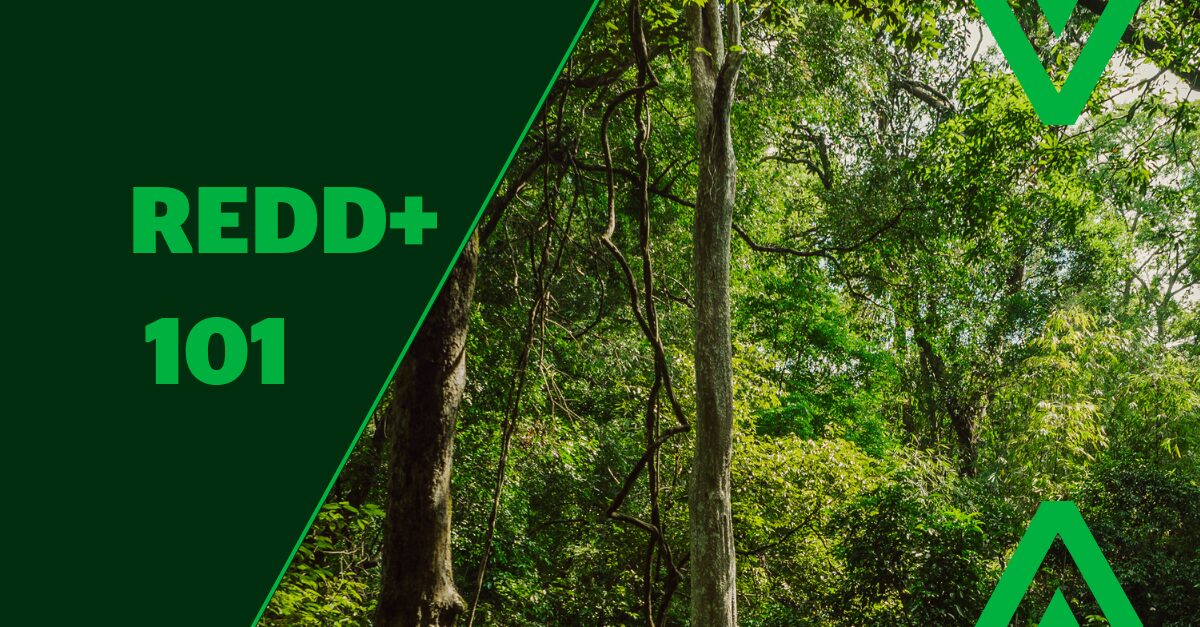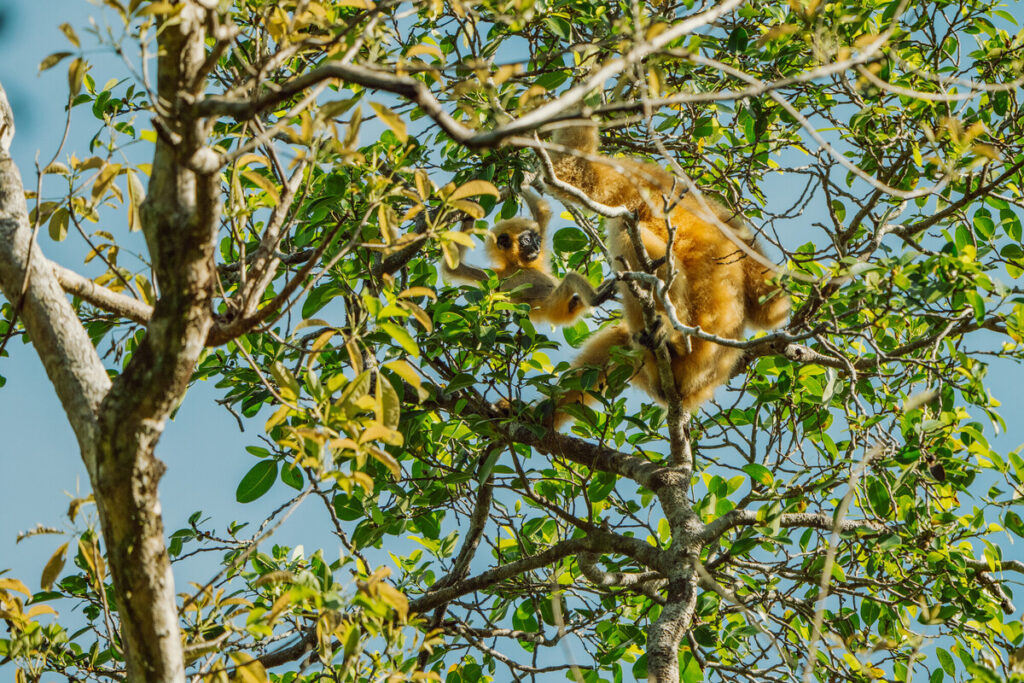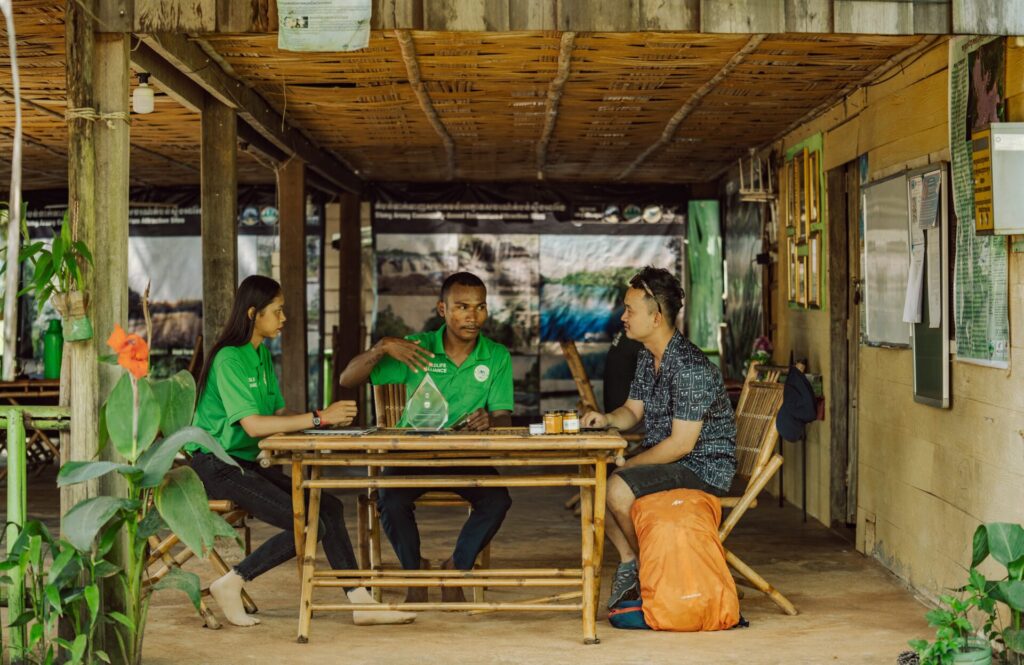
Biodiversity refers to the variety of life forms found in an area, encompassing animals, plants, fungi, and even microorganisms. Maintaining biodiversity ensures that our ecosystems are healthy and that they are able to provide valuable ecosystem services such as pollination, nutrient cycling, and climate regulation. The biodiversity that we observe today has been shaped over 4.5 billion years through the process of evolution, with human activity exerting an ever-growing influence.
Biodiversity is not evenly distributed across the world. Specific regions around the world host a high concentration of endemic species that cannot be found anywhere else. These regions may simultaneously face severe threats from habitat degradation and anthropogenic disturbances. Around the world, there are 36 regions that are classified as biodiversity hotspots – these areas harbor remarkable ecological richness, but have lost over 70% of their original habitat extent due to anthropogenic threats. Despite covering less than 2.5% of the Earth’s land surface, these regions are home to over half of the world’s endemic plant species and nearly 43% of the endemic species of birds, mammals, reptiles, and amphibians.
The REDD+ mechanism was established to protect forests, which are among the most biodiverse terrestrial ecosystems in the world. Tropical rainforests cover less than 5% of the world’s total surface yet they contain about 50% of all terrestrial biodiversity, and rainforest plants provide derivatives of 25% of all drugs used in modern medicine globally. Forest biodiversity provides us with everyday products and services, and is deeply connected to the rich and complex cultures and societies of forest indigenous groups around the world.
Hence, the conservation of biodiversity values is an important core benefit of REDD+ projects. Protecting forest ecosystems helps to protect the biodiversity within these forests, the ecosystem services provided by forest biodiversity, and the cultural traditions, livelihoods and way of life of the indigenous communities who have been their guardians for generations. High levels of biodiversity in tropical forests indicate that the ecosystem is healthy, well-functioning and well-balanced. Monitoring and measuring the biodiversity of a forest thus provides an important proxy for forest health, helping us to understand what types of stressors or threats the ecosystem is facing. A robust biodiversity monitoring program is therefore crucial for helping high-quality REDD+ projects assess ecosystem and biodiversity health.
Many REDD+ projects are situated in forests that harbor biodiversity values of global significance. Monitoring and managing forest biodiversity thus provides REDD+ projects with the tremendous opportunity to make meaningful contributions to the Kunming-Montreal Global Biodiversity Framework by reducing biodiversity loss through participatory and effective area management that respects the rights of indigenous peoples and local communities, and by using conservation management practices to minimize human-wildlife conflict and halt human-induced species extinction.
| Wildlife Works Kasigau Corridor REDD+ Project The Wildlife Works Kasigau Corridor REDD+ Project protects 200,000 hectares of dryland forest between Tsavo East and West National Parks. Tsavo National Park is the largest national park in Kenya, and is home to more than 11,000 wild African elephants, as well as other mammals such as lions, leopards and cheetahs. Initially gazetted as one single park, Tsavo National Park was divided into East and West by the creation of the Mombasa-Nairobi railway line. Kasigau thus serves as an important wildlife corridor for many of Tsavo’s wildlife species, especially migratory and large animals, such as the 2000 endangered African elephants (Loxodonta africana) that permanently reside in the REDD+ Project Area. Wildlife corridors are critical passageways used by wildlife to travel large distances for feeding, breeding, or migratory purposes. The Kasigau Corridor is therefore especially important for the African elephant population, which requires large spaces to roam and forage for food. As the world’s largest herbivores, African elephants not only need to consume a large quantity of food everyday to sustain themselves, they are also keystone species in their habitats – their movement through the forest understory helps create clearings that promote new plant growth, and the seeds of plants and fruits species they consumed are dispersed throughout the forest via the elephants’ fecal matter. African elephants thus play a critical role in facilitating the redistribution of water from the soil into Kasigau’s water-scarce dryland trees and forest by promoting new plant growth. This improves nutrient cycling and creates access to water for other organisms. Dryland forests also tend to have a high rate of endemism (presence of species that are native to the area and cannot be found anywhere else), and are a critical source of non-wood forest products such as resins, honey, tannins, and medicines for the local community. The health of the elephant population in Kasigau is therefore intrinsically tied to the health of the dryland forests in the area. To observe and assess the elephant population, the biodiversity monitoring team implements quarterly on-the-ground biodiversity monitoring surveys and monthly aerial patrols, and they also conduct regular ranger patrols and create additional waterholes for elephants to protect them from poaching and drought. As drought conditions in the region worsen – exacerbated by the effects of climate change – increased tensions are expected between the African elephant population and local communities. During seasons of low rain and vegetation availability, elephants are more likely to enter into community territories to raid crops and search for water sources. The effects of these raids can be devastating, especially for smallholder farmers, who could lose their entire harvest in a night’s raid. Mitigating such human-wildlife conflict is thus crucial to ensuring the safety of the local communities and the elephant population, who also risk being attacked in retaliation by community members. At Kasigau, a dedicated emergency response unit has been set up to support farmers at risk of or facing raids from elephants, and research scientists have also designed and constructed innovative fences to keep elephants out of crop fields. By keeping peace between the local communities and the elephant population, the work of the rangers and the biodiversity monitoring team is crucial to ensuring the success of the Kasigau Corridor REDD+ Project. |
Common biodiversity monitoring techniques in tropical forests include transect surveys, camera trap studies, and bioacoustics monitoring. Transect surveys involve setting a “transect” route that surveyors walk on to detect the relative presence of species within a specific area. This is usually supplemented by the use of motion-sensitive camera traps to capture images or videos of elusive wildlife species, as well as the use of bioacoustics monitoring, which entails deploying remote recording devices in an area to identify wildlife species that have unique vocal signatures or that may be difficult to differentiate by sight.
The use of monitoring tools such as camera traps and bioacoustics allow researchers to observe wildlife non-intrusively without disturbing their natural behaviors, which is especially valuable in understanding the behavior and habits of elusive and nocturnal animals that are rarely seen in real life. Biodiversity monitoring teams in REDD+ projects have also used camera trap footage to identify and observe specific individuals, in order to gain a deeper understanding of the behavioral patterns of wildlife found within a project area.
As it is impossible to fully capture and quantify all of biodiversity within an area, projects usually focus on studying the population of one species in an area, or on identifying the number of species within various animal groups (for e.g. birds, mammals, reptiles, amphibians, etc) in order to get a representation of biodiversity within a forest ecosystem. Information captured from these studies are then used to inform wildlife conservation efforts in these areas.

| Wildlife Conservation Society Keo Seima Wildlife Sanctuary REDD+ Project Forming part of the Eastern Plains landscape in Cambodia, Keo Seima Wildlife Sanctuary REDD+ Project is managed by Wildlife Conservation Society (WCS) and boasts a world-class biodiversity monitoring program that has been running continuously for over a decade. At the Keo Seima Wildlife Sanctuary, biannual surveys are conducted for the development of a full checklist of the species of birds, mammals, amphibians, reptiles, fish, and insects that can be found in the area. Using a method known as distance sampling, the biodiversity monitoring team also tracks and estimates the population size of key mammal species found in the area throughout the years. This has allowed the team to identify key biodiversity areas within the sanctuary, where wildlife are commonly found, and to conduct targeted patrols in these areas to locate and dismantle snares used for poaching. Following the identification of the range of bird species found at the sanctuary, the biodiversity monitoring team has established a nest protection program to monitor and protect the nests of critically endangered bird species, such as the giant ibis (Thaumatibis gigantea). Community members play a crucial role in the nest protection program by monitoring the nests daily and ensuring zero predation, while receiving a stipend for their efforts. This provides local communities with financial incentives for protecting wildlife species while increasing the chances of survival for threatened bird species. The success of WCS’s wildlife conservation efforts has led to increased biodiversity awareness and support for ongoing programs within the community, allowing the team to expand the number of bird species being protected to include the critically endangered white-shouldered ibis (Pseudibis davisoni) and the vulnerable Sarus crane (Grus antigone). Increased biodiversity monitoring and protection not only leads to improved outcomes for wildlife, but can also provide local communities with alternative livelihood opportunities and strengthen the overall protection of forest ecosystems. |
Maintaining biodiversity health can no doubt bring benefits to the entire ecosystem. But the act of monitoring biodiversity itself can be beneficial too – by systematically observing and measuring biodiversity in an area, communities gain a deeper understanding and appreciation for their natural surroundings, fostering a sense of pride and stewardship for their environment. Understanding local biodiversity creates new avenues for communities to engage in sustainable, alternative livelihood opportunities, such as ecotourism, and helps to positively transform the relationship between local communities and wildlife. By creating durable, economic incentives for forest and wildlife protection among communities, forests can be effectively conserved over the long-term.

| Wildlife Alliance Southern Cardamom REDD+ Project Wildlife Alliance’s Southern Cardamom REDD+ Project forms part of the Cardamom Mountains, which is located in the Indo-Burma hotspot – one of the world’s most biodiverse hotspots. The Indo-Burma hotspot is also one of the most threatened biodiversity hotspots in the world, containing high levels of floral and faunal endemism threatened by habitat loss and overexploitation. To promote protection of the biodiversity hotspot, Wildlife Alliance (WA) has been working with the Chi Phat community of the Cardamom Mountains since 2007 to set up community-based ecotourism, providing an alternative source of livelihood for 250 landless farming families who were struggling to make ends meet. To date, WA has supported the construction of forest trails, campsites and guest houses, and invested in the development of infrastructure to facilitate outdoor activities such as mountain biking, kayaking, and rowing. Now members of the Chi Phat community – many of whom used to engage in slash and burn agriculture, poaching and logging – have chosen new careers as tour guides, helping tourists navigate the forest and campsites. The success of Chi Phat’s community-based ecotourism program has prompted WA to support the establishment of another ecotourism program at Stung Areng in 2016, and to date, both ecotourism projects have welcomed over 20,000 visitors to their sites and received national and international accolades for their success in integrating forest conservation with community-based livelihoods. |